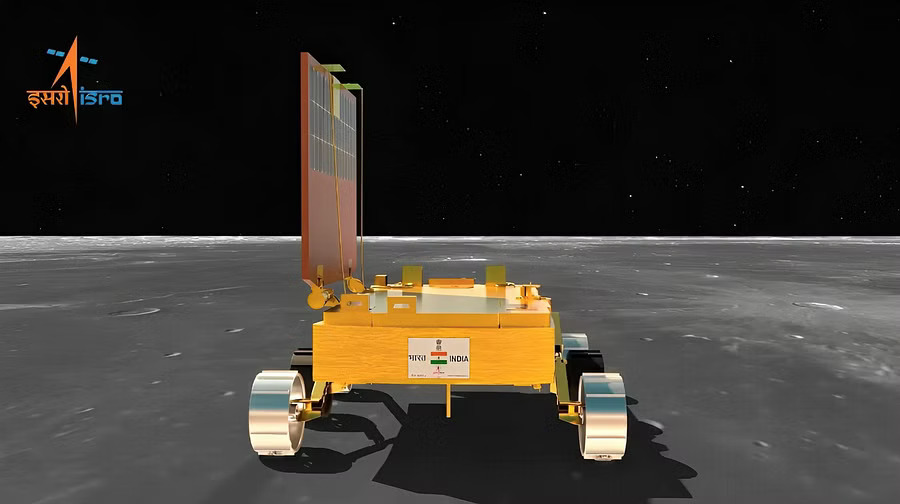In a significant stride towards unraveling the mysteries of the Moon, the Indian Space Research Organisation (ISRO) has reported a groundbreaking discovery by the Chandrayaan-3 rover. The rover has confirmed the presence of sulphur on the lunar surface, shedding light on the Moon’s geology and history. Furthermore, ISRO has announced that the search for hydrogen on the Moon is currently underway, marking a pivotal phase in the lunar exploration mission.
The confirmation of sulphur’s presence is a noteworthy achievement, as it holds clues to the Moon’s formation and evolution. Sulphur is often linked to volcanic activity, and its detection could help scientists gain insights into the Moon’s geological processes and its history of volcanic eruptions.
The Chandrayaan-3 rover, equipped with advanced scientific instruments, has been meticulously examining the lunar terrain, conducting a thorough analysis of its composition. The confirmation of sulphur’s presence comes after meticulous data analysis and careful scrutiny of samples collected from the Moon’s surface.
In addition to the sulphur discovery, ISRO’s lunar exploration mission is focusing on identifying hydrogen on the Moon. Hydrogen is of great interest to scientists due to its potential association with water molecules. The presence of hydrogen on the lunar surface could offer clues about the Moon’s history of water delivery, which has implications for future lunar exploration and potential resource utilization.
The Chandrayaan-3 mission has garnered international attention and praise for its ambitious goals and scientific objectives. ISRO’s steadfast commitment to space exploration has positioned India as a prominent player in the global space community. The success of previous Chandrayaan missions, coupled with the promising developments from Chandrayaan-3, reinforces India’s capabilities in space research and technology.
As the search for hydrogen on the Moon progresses and new findings emerge, scientists anticipate a deeper understanding of the Moon’s geology, composition, and potential resources. The findings from Chandrayaan-3 will not only contribute to humanity’s knowledge of the Moon but could also pave the way for future lunar exploration missions and the possibility of establishing a sustained human presence on Earth’s natural satellite.
The advancements in space exploration, exemplified by the Chandrayaan-3 rover’s discoveries, highlight the relentless pursuit of scientific knowledge and the immense potential for space to reveal secrets about our universe and its celestial bodies. The international scientific community eagerly awaits further revelations from ISRO’s ongoing lunar exploration mission.









